Samsung literally went big this year with the Galaxy S8, sporting a 5.8-inch display and the Galaxy S8+ going as high as 6.2 inches. This is an unprecedented move and something that we have not seen before.
The Korean company certainly pushed the limits in display size without sacrificing the usual body size and form factor that we’ve gotten used to.

The S8 alone has surpassed all other contemporary flagship smartphones in terms of screen real estate, including its erstwhile cousin, the Galaxy Note7.
And, with the Galaxy S8+ having a much bigger 6.2-inch display, it begs the question — is there still room for the Note8? Or are we going to see a much bigger Note8 in the near future? Perhaps in the range of 6.5 to 6.7-inch range? But we digress.
Today, we’re giving you our full review of the Samsung Galaxy S8.
Table of Contents
Design and Construction
This year, Samsung has decided to settle with a singular design for the Galaxy S series, with the Galaxy S8 and S8+ sharing the same design and only differing in screen size.

This time around, the S8 came with a large dual curved screen, a feature used to be exclusive to the Edge variant and the Note series.
In a way, the S8 looks a little similar to the S7 Edge although the body size is still smaller.
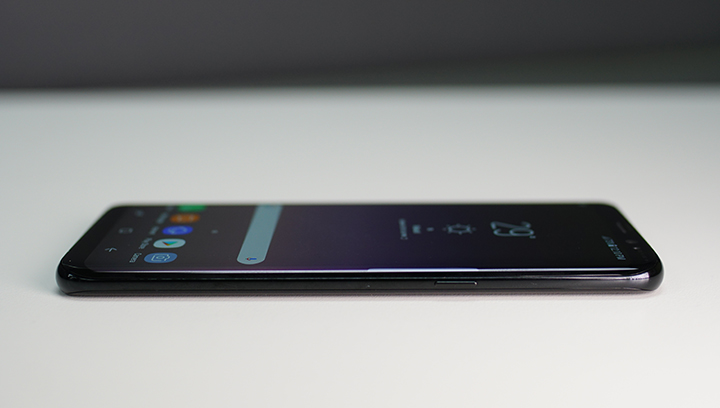
The physical home button has been completely removed in favor of on-screen capacitive keys.
The Samsung logo that used to be at the top corner has been removed as well to make more space for the display.
There’s literally nothing left at the front except for the camera and a few sensors.
This is not the first time we’ve seen this approach. Last year, Xiaomi released the Mi Mix — a rather extra large smartphone with 6.4-inches of pure display, leaving nothing up front but a camera and sensors. This could have been Samsung’s inspiration for the Infinity Display of the Galaxy S8.

The power button is on the right, volume controls on the left along with a new dedicated button for Bixby, the new Smart Assistant that evolved from S Voice.
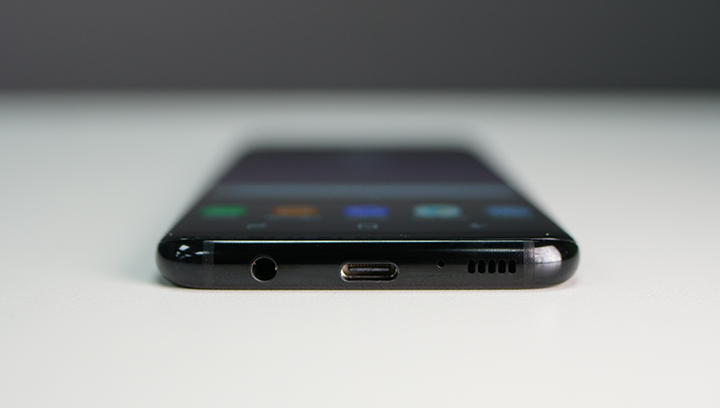
The 3.5mm audio port and speaker grills at the bottom along with the USB Type-C port.
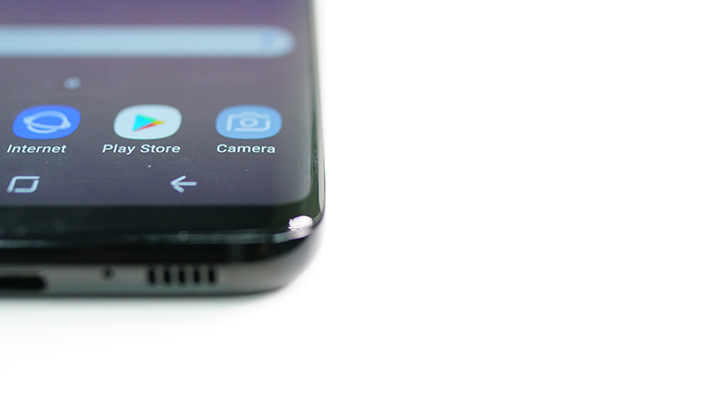
The SIM card slot is found on the top side with two SIM trays supporting nano-SIM cards. The second tray is a hybrid one and can also support a microSD card up to 256GB.

At the back is the single rear camera in the middle, flanked by the dual tone dual-LED flash on the left and the fingerprint scanner on the right.
This is the first time Samsung decided to put the fingerprint scanner at the back. It’s also rather small and the placement near the camera can be a bit awkward or confusing to figure out.
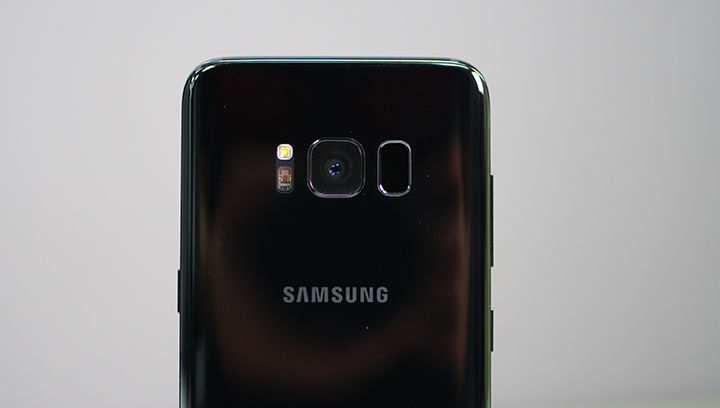
Samsung also retained the IP68 dust and water-resistance of up to 1.5 meters and 30 minutes.
Since this is a fairly significant design shift, there were a lot of conscious decisions and a few compromises done on the Galaxy S8. It still dons that familiar Samsung design that is beautifully executed to highlight the gorgeous curved display.
Display
Samsung has placed literally moved everything else to the back when it pushed the screen size to the absolute maximum in the Galaxy S8.
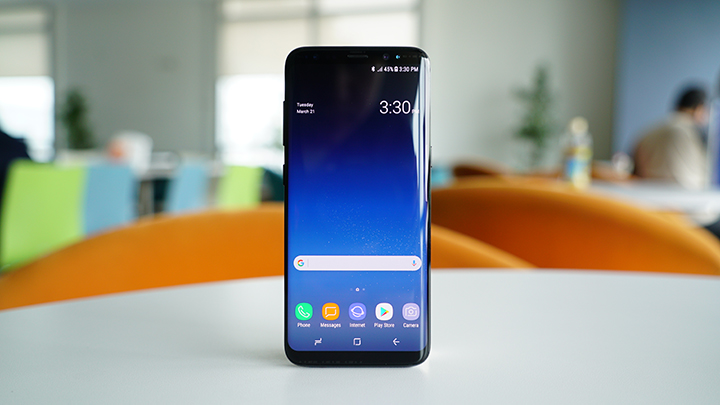
With a screen size of 5.8 inches, the Galaxy S8 is the biggest flagship smartphone to date, leaving behind the usual 5.1-inch to 5.5-inch standards in this category. On that same note, it has even surpassed the normal screen size of phablets that used to be in the 5.5-inch to 5.7 inches.
This is a huge upgrade. From the measly 5.1-incher, the Galaxy S series got a major bump in display size.

Samsung managed to do this by putting everything else at the back. No more physical home button. No more space for the Samsung logo. They trimmed down the bezels on all sides, merely leaving space for the front camera, sensors and an Iris scanner.
The Galaxy S8 also got curved a display, a feature first introduced in the Galaxy Note Edge, then adapted by the Galaxy S6 Edge/Edge+, S7 Edge, and Note7. This signaled the sunsetting of the Edge variant in the S series with the bigger S8 merely being referred to as the S8+ (and not an S8 Edge using the old nomenclature).
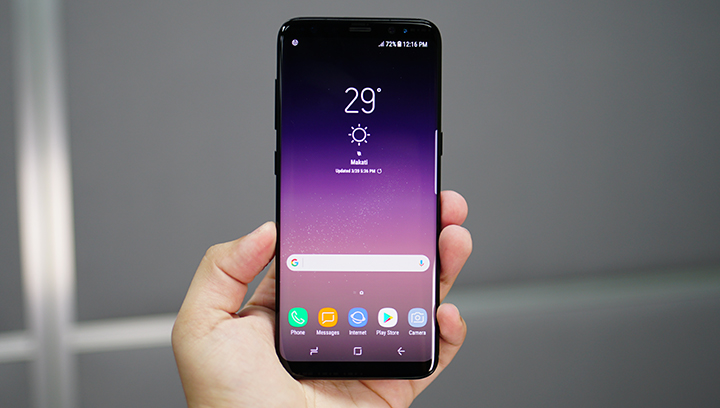
The S8 features a large screen resolution of 2,960 x 1,440 pixels (WQHD+) giving it a pixel density of 568 ppi. The resolution can be natively adjusted, though, with options of full HD+ (2,220 x 1080 pixels) and HD+ (1,480 x 720 pixels), depending on user preference.

This also means the aspect ratio has been stretched to an odd 18.5:9. To address the potential issue that videos and games will leave a black margin on the sides, the device has the option to zoom and crop the content to perfectly fit into the screen.
Samsung employs the same Super AMOLED display so expect the same vibrant and rich colors, crisp details and high contrast. Outdoor visibility is pretty good as well. The Blue Light filter helps reduce eyestrain after prolonged use especially at night.
Camera
Samsung used to put a lot of effort on the camera of the Galaxy S series. It’s one of the reasons why they’ve been known to make the best smartphone camera in terms of performance and image quality.

This year, though, Samsung decided to just use the old sensor they got from the Galaxy S7 and put it on the Galaxy S8. Since it’s just the same hardware, don’t expect any significant difference here. Don’t get us wrong — it’s still a great all-around camera.
Video recording is up to 4K @ 30fps or 1080p @ 60fps. Slow motion video defaults at 720p @ 240fps.
The front camera, on the other hand, received an upgrade from 5MP to 8MP with a wide field of view and larger f1.7 aperture. So yes, your selfies will look better, especially on low-light.
There were improvements introduced in the native camera app (for the front camera). They’re mostly cute and playful features that target the Snapchat generation.
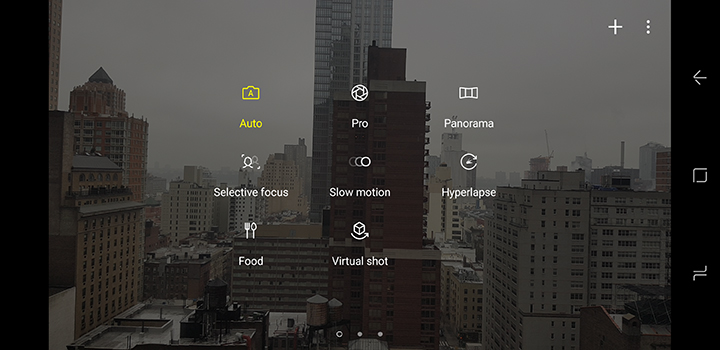
The Pro Mode gives you the ability to manually control the ISO (50-800), shutter speed (1/2400 to 10 sec), white balance and picture profile.
One of our favorite feature before was the double-tap on the home button to launch the camera from sleep. While the home button is no longer there, the feature has been retained and moved to the power button.
Erratum: Upon closer inspection, we found out it’s not really the same exact ISOCELL sensor. AIDA64 showed a generational update to the sensor compared to the one on the Galaxy S7 (an SLSI_S5K2L2_FIMC_IS for the S8 vs. SLSI_S5K2L1_FIMC_IS for the S7) although the sensor specs are the same.
OS, App, UI
The Galaxy S8 runs Android 7.0 Nougat right out of the box and customized with a touch of TouchWiz UI. There are some native pre-installed apps like Samsung 321 (for the Philippines), Samsung Notes, Secure Folder with a few other Samsung ecosystem apps.

The on-screen menu (Recent Apps, Home, and Back) has been slightly redesigned and are always present and floating at the bottom of the screen. There’s no virtual key or menu for the app drawer but you can just launch it by swiping the home screen up or down.
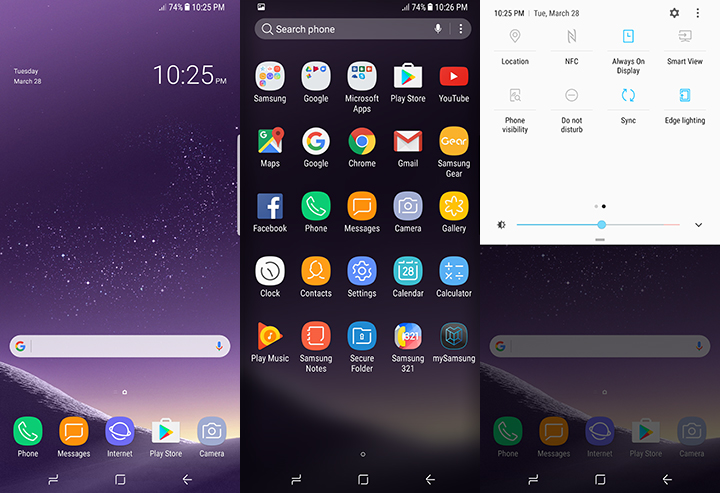
Just like in the S7 Edge and the Note7, the Galaxy S8 features App Edge, People Edge, and Clipboard Edge as well as Smart Select. This can be accessed by swiping the curved part of the display.

For security purposes, Samsung has employed a suit of features. First is the standard fingerprint scanner. This has been moved from the physical home button up front to the back, just beside the camera. It’s smaller and less prominent but works just the same with a maximum of 4 unique prints. The new placement means it will only work best with your index finger and prefers right-handed users.

The second option is via the Iris scanner. We’ve seen it work flawlessly before in the Note7 and the same security feature is available on the Galaxy S8.
The 3rd security feature is facial Recognition. It’s the new one but it’s actually much faster to use than the Iris or fingerprint scanner although not as secure as the Iris.
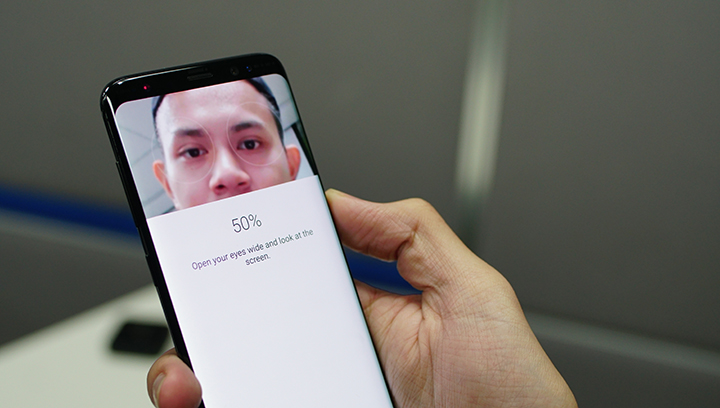
Bixby, Samsung’s new virtual assistant, has replaced the old S Voice and Flipboard Briefing. It accepts voice commands and comes with a dedicated activation button on the left of the handset, just below the volume control.
We liked the new TouchWiz UI. It’s simpler, cleaner and more modern. If you don’t like the default theme, you can always download a new one from the Theme Store for free.
The unit’s 64GB of internal storage only has 53.98GB of usable space.
Performance and Benchmarks
Samsung’s Exynos chip has long been known to perform very well and remain power efficient so we expect no less from the new Exynos 8895 octa-core chip that is used on the Galaxy S8.

The Exynos 8895 is composed of a quad-core ARM Cortex A53 processors running at top speed of 1.7GHz paired with a custom-made, high-performance Exynos M1 quad-core processor running at a maximum clock speed of 2.3GHz. The difference between this and the Exynos 8890 is mainly on the GPU side. The 8895 uses the latest Mali G71MP20 while the 8890 uses a Mali T880MP12.
Samsung ditched the ARM Cortex A73 which is the latest high-performance architecture found in the Snapdragon 835 (used in the Sony Xperia XZ Premium) and the Kirin 960 (used in the Huawei Mate 9 and Huawei P10/P10 Plus).
Based on synthetic benchmarks, the Exynos M1 processor did not disappoint, scoring a high of 174k in our Antutu benchmark.
Antutu Benchmark: 174,155
Quadrant Standard: 43,185
PCMark: 5,371 (Work 2.0), 6,034 (Work 1.0)
PCMark Storage: 4,421
3DMark: 3,159
Vellamo: 7,269 (Browser), 3,324 (Metal), 3,621 (Multi-core)
Geekbench 4.0: 1,974 (Single core), 6,339 (Multi-core)
Samsung did not bother to increase the RAM on the Galaxy S8. They say it can manage to perform its best at 4GB although we’ve already seen a 6GB Galaxy C9 Pro from Samsung before.
Call Quality, Connectivity and Battery Life
The Galaxy S8 is complete will all the necessary connectivity options — from 4G/LTE, to fast dual-band WiFi, Bluetooth, and NFC. Call quality is excellent, audio is loud and clear and signal reception is pretty strong. The S8 is also the first phone to support Bluetooth 5.0, a feature that allows it to connect to multiple Bluetooth devices at the same time.
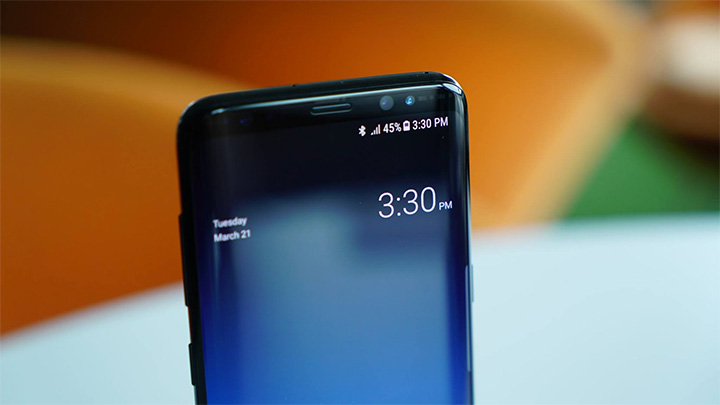
Samsung did not bother to increase the battery capacity of the Galaxy S8 and it stayed at 3,000mAh. Despite the larger display and higher pixel count, the company claims battery life should still be the same.
Using the PC Mark Battery Test, the Galaxy S8 got 9 hours and 21 minutes at 50% brightness, 0% volume and in airplane mode. This is statistically the same battery life compared to the 9 hours and 19 minutes that the Galaxy S7 had, despite the fact that the screen is way bigger.

Based on our standard video loop test, the Galaxy S8 took about 16 hours and 20 minutes at 50% brightness and 0% volume in airplane mode. That’s also about 4 hours longer than the Galaxy S7 on the same test.

Aside from fast wired charging via USB Type-C, Samsung also included fast wireless charging capabilities on the S8. Charging time is about 75 minutes from zero to fully charged.
Conclusion
Samsung is redefining the limitations of a smartphone and this is evident in the Galaxy S8. This year, the focus is on the big display and the large screen real-estate of the S8 will blow you away. Samsung is not the first one to take this path as Xiaomi has done so in the Mi Mix and LG with the G6 yet those curved display on the Galaxy S8 added to the almost bezel-less dimension.

With bigger screens on smaller handset form factor, Samsung might just convince you to forget about those bulky phablets.
Same impressive performance, bigger and better display, same great camera all packed in a solid build and beautiful design. Samsung never fails to impress.
Update: The suggested retail price of the Galaxy S8 in the Philippines is Php39,990. Release date is 1st week of May 2017.
Check out our video review below:
Samsung Galaxy S8 (SM-G950F) specs:
5.8-inch Super AMOLED Quad-HD+ Infinity display @ 2960×1440 pixels, 568ppi
Corning Gorilla Glass 5
Samsung Exynos 8895 64-bit 10nm octa-core CPU
4 x ARM Cortex A53 1.7GHz + 4 x Exynos M1 2.3GHz
Mali G71MP20 GPU
4GB LPDDR4 RAM
64GB internal storage
Expandable up to 256GB via microSD (uses SIM 2 slot)
12MP Dual Pixel rear camera dual-tone, dual-LED flash, f/1.7 aperture
8-megapixel front-facing auto-focus camera with f/1.7 aperture
Dual SIM (hybrid), dual LTE
WiFi 802.11ac
Bluetooth 5.0
NFC
GPS with aGPS support, Galileo, Glonass, BeiDou
Fast Wireless Charging
Fingerprint Scanner
Heart-Rate Sensor
Iris Scanner
IP68 Rating, Dust, and Waterproof
Android 7.0 Nougat with TouchWiz
Samsung Bixby, Bixby Vision
3,000mAh Li-Ion non-removable battery
Colors: Midnight Black, Maple Gold, Orchid Grey, Coral Blue, Arctic Silver
What we liked about it:
* Beautiful design
* Gorgeous Infinity Display
* Impressive Performance
* Great camera
* Great battery life
* Large storage capacity
* Iris scanner
What we did not like:
* More expensive
ALSO READ:
• 8 Winning Features of the Samsung Galaxy S8 / S8+
• 2017 Korean Flagship Battle: Samsung Galaxy S8 vs LG G6
• Samsung Galaxy S8 vs. Galaxy S7: What’s Different
• Samsung Galaxy S8+ vs. LG G6: Battle of Big Screens
• Samsung Galaxy S8+ vs Galaxy S7 Edge: What’s Different




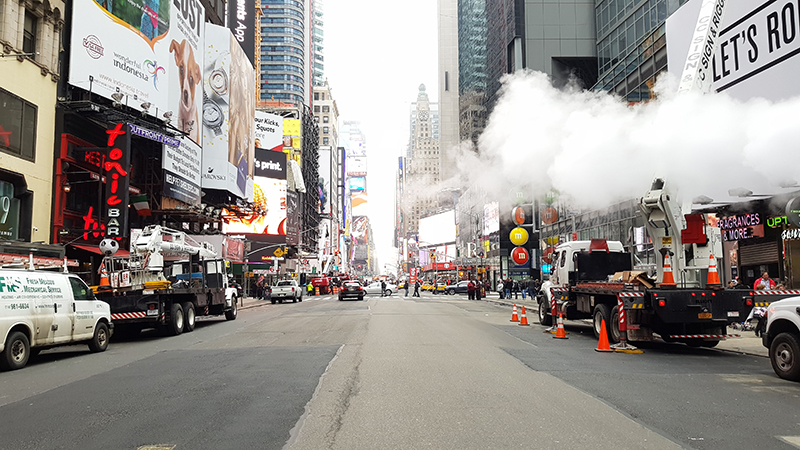




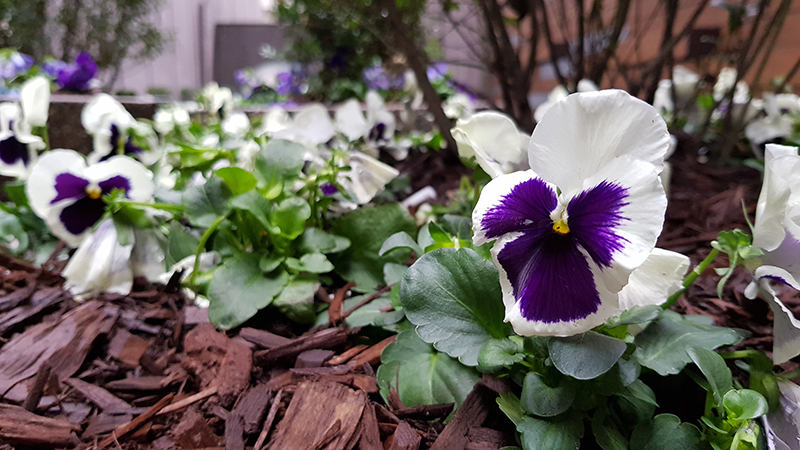

























Does Samsung Galaxy S8 available at Smart support dual SIM slots?
Yes
Ok naman pero mas maganda padin ang iphone. I am using iphone 6st. Pagdzting sa performance mabilis naman kaya lang nag foforce close ang ibang app. Pagdating sa pagsagap ng lte signal mabagal. Camera mas vivid padin ang kuha ng iphone. Kaya kung iphone user ka. I am not suggesting to buy s8t. Hintay nalang ng iphone8
Whaaaat 50k ang iphone 8, 32k ang s8
I scrolled almost the whole site, andito lang pala yung price. Thanks!
Screens on the phone curve around the sides making for a border-free look. This is the first phone with Bluetooth 5, which can potentially transmit to devices 120 feet away. And the S8 is the first US phone with the Qualcomm Snapdragon 835 chipset.
Hi guys eto na ang pre order!! post ko lang po ang link. Thank you!! GET YOURS NOW!
Samsung Galaxy s8 and s8+ Pre-Order link!
http://ho.lazada.com.ph/SHNjrl
Bakit sa PH market madalas puro dual sim? China phone lang? Jk! Btw may available ba na single sim lang dito sa PH market?
Ang tagal ko binasa mga beshie. Wlang price. Hahaha. Kaloka
Nice review but I can’t help but feel you’re misinforming regarding some important aspects of the device. It’s been said and confirmed that the main camera on the S8 is using a new sensor and updated post processing, all camera comparisons between the S7 and S8 clearly have the S8 performing a LOT better, especially with better exposure and dynamic range.
Additionally, how can you measure battery life or video playback time by simply setting the slider to 50%? The phone has an updated HDR certified display that is brighter than the one on the S7, at 50% brightness it’s possible (and likely) that the S8 is probably a few tens or hundreds of nits brighter, which will definitely impact battery life.
If you could do a side by side comparison between the S8 and S7’s cameras but also compare battery life at a similar brightness level (in nits) this review would feel considerably more complete and trustworthy.
Bentahe lang nito is infinity display. Pero kapag titigan, mukhang di maganda. What if nagpalit k ng wallpaper, nagbabago din ba yung kulay ng icons and text sa taas and the on screen buttons? For us pinoys, 5.5 is big enough. Hirap na din ibulsa. Wrong place din yung finger scanner. The camera cover or lens is prone to scratch or prints… Bakit di man lang 6gb yung ram. Considering na flagship. The front camera is also disappointing. Though 1.7 aperture pero mababa. Just an 8mp. Even hindi ako na wow, bibilhin ko pa rin if may pera ako.. ;)
The problem of this almost bezel-less Phone is the toughness., I bet if you drop this one the LCD Screen will easily Crack AF since it’s almost near the edge I bet or the cracked glass will affect the display propriety of the screen LCD.
The Sony Xperia XZ Premium is better than the Samsung Galaxy S8 series in some areas like front-facing stereo speakers and fingerpring scanner placement when it comes to android phones. Rounded screen corners? Xiaomi and LG have done that already. Usable battery capacity? Well, a lot of chinese phones beat the S8 series in this key feature. To be fair with Samsung, its Bixby and Dex features are nice additions to the Galaxy S series.
sony phones will always be mediocre in terms of performance. It may get excellent grade on design but worse on performance.
4k display in a 3000mah batt? Nah